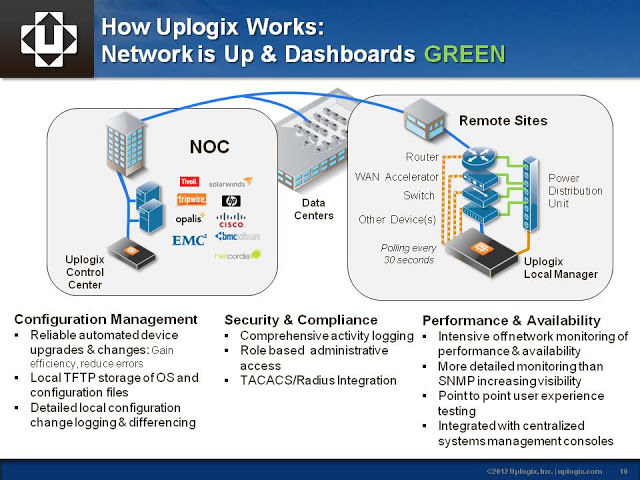 |
| When adding redundant hardware, be ready for twice the cost of maintenance. |
When talking with someone for the first time about Local Management, sometimes they jump to a quick objection that goes something like this:
“I don’t need out-of-band access for my network infrastructure. I have a redundant architecture.”
Sometimes people go on to detail how robust their redundancies are by offering up the speeds and feeds of the backup hardware and outside network connections. Does this sound like you? If so, you really need to read on.
All of this is great — uptime is very important in many businesses and that number is increasing daily as connections both within the LAN and the WAN are the difference between making money and sitting idle — or worse, losing sales.
Many companies spend significant dollars ensuring they are backed-up for any scenario, and the “when the network is red” value scenarios for Uplogix can sound redundant to the redundancies. However, playing the redundancy card is a sign that a contact might be a great candidate for Local Management. It tells us 1) they have high expectations for network uptime, and 2) they have a more complicated network, with more gear and likely multiple means of connectivity into their site.
Both of these factors benefit greatly from the “when the network is green” functionality of Local Management. These are the day-to-day features that reduce support costs by simplifying tasks that centralized management tools aren’t able or trusted to do. The daily tasks that account for a large portion of the time it takes to run a network (even more when you are adding redundancy to the picture).
For example:
Configuration Management
- Reliable automated device upgrades & changes: Gain efficiency, reduce errors
- Local TFTP storage of OS and configuration files
- Detailed local configuration change logging & differencing
Security & Compliance
- Comprehensive activity logging
- Role based administrative access
- TACACS/Radius Integration
Performance & Availability
- Intensive off network monitoring of performance & availability
- More detailed monitoring than SNMP increasing visibility
- Point to point user experience testing
- Integrated with centralized systems management consoles
So next time you are judging the strength of your network, keep in mind both the pros (better uptime), but also the cons (higher costs), and give Local Management a look. It can help with both.





